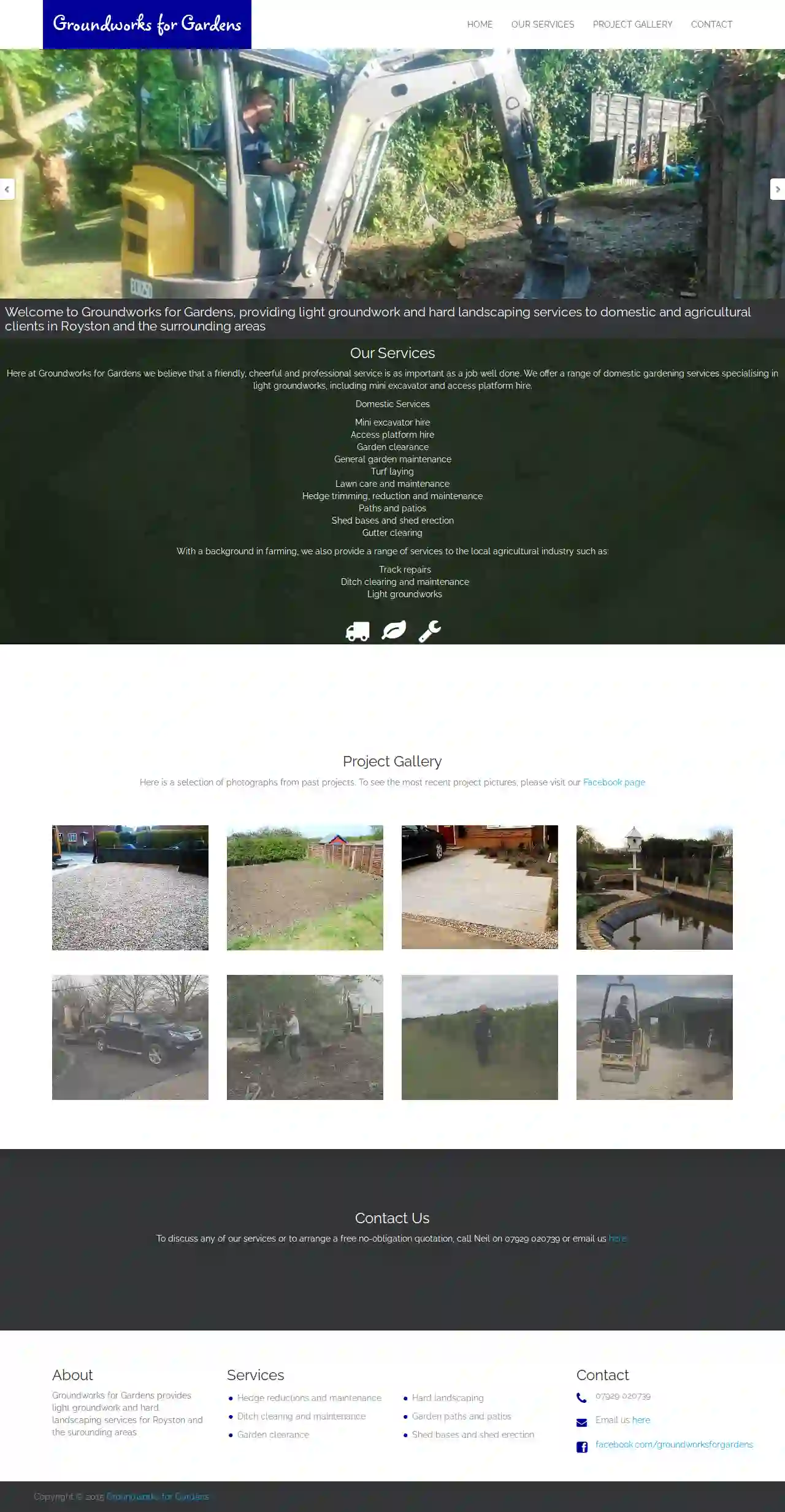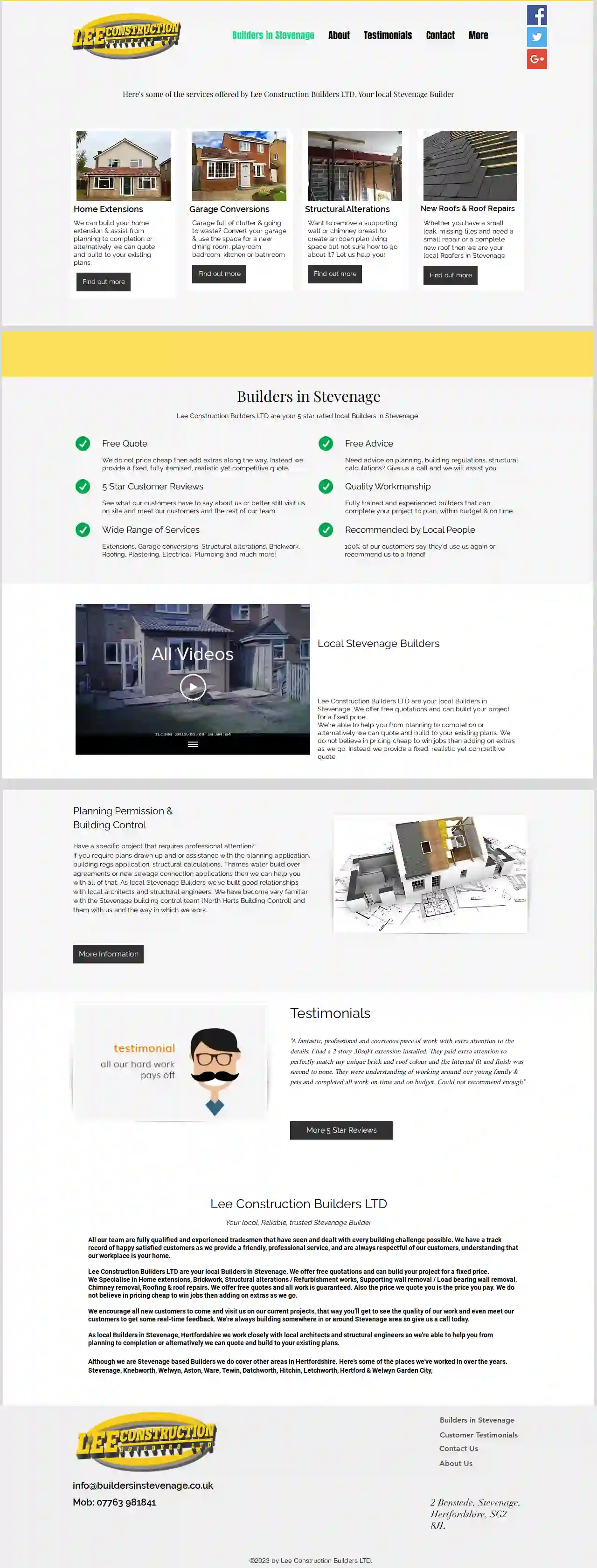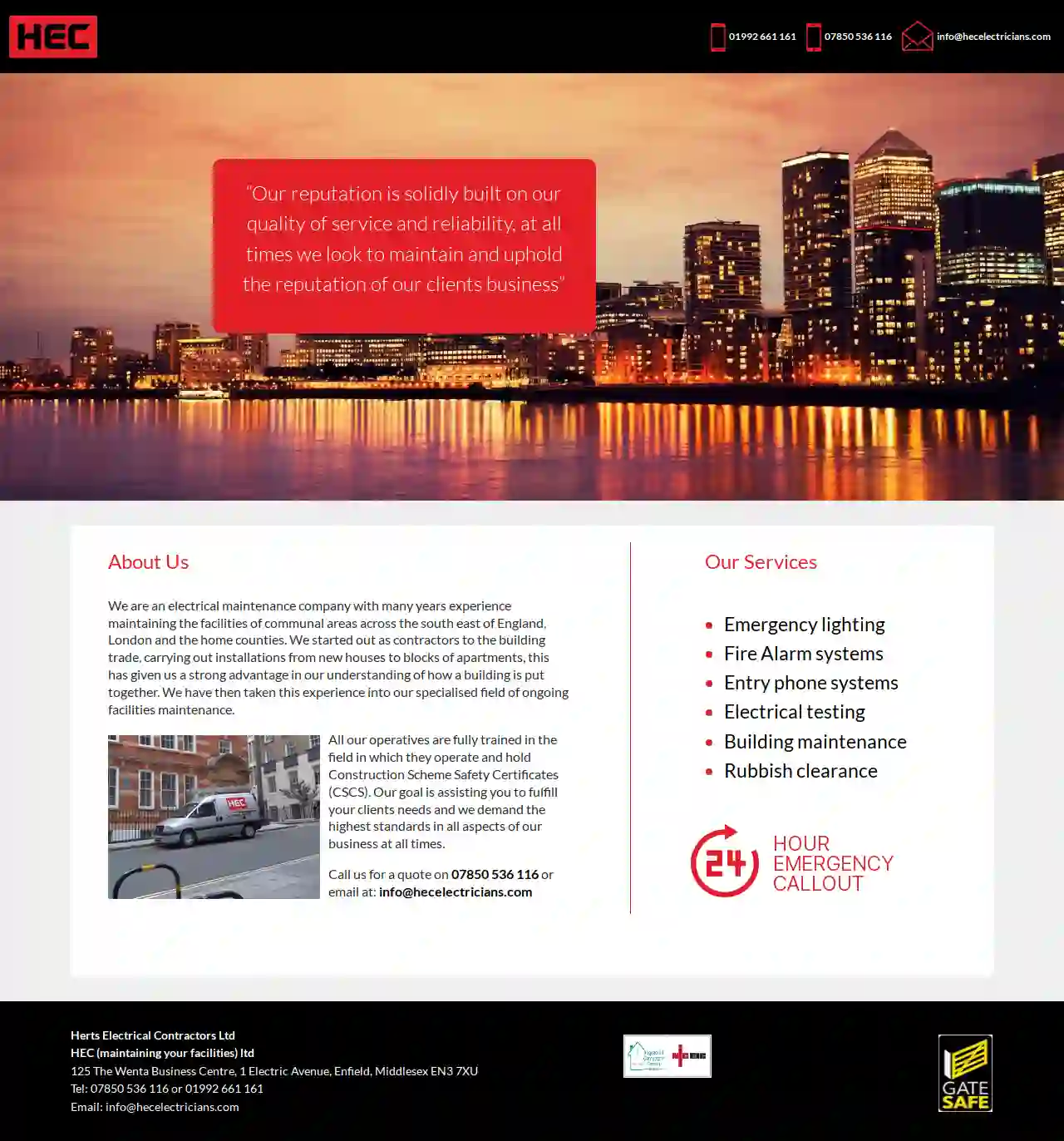Demolition Contractors Standon
Find the best Demolition Company Near Me in Standon
Get 3 FREE Demolition Company Near Me quotes for your project today! Compare profiles, reviews, accreditations, portfolio, etc... and choose the best service.

Groundworks for gardens
56 reviewsHertford, GBWelcome to Groundworks for Gardens Groundworks for Gardens provides light groundwork and hard landscaping services for Royston and the surrounding areas. We believe that a friendly, cheerful and professional service is as important as a job well done. We offer a range of domestic gardening services specialising in light groundworks, including mini excavator and access platform hire. With a background in farming, we also provide a range of services to the local agricultural industry such as track repairs, ditch clearing and maintenance, and light groundworks.
- Services
- Why Us?
- Gallery
Get Quote
Lee Construction Builders LTD
571 reviews2 Benstede, Stevenage, SG2 8JL, GBLee Construction Builders LTD Your local, Reliable, trusted Stevenage Builder All our team are fully qualified and experienced tradesmen that have seen and dealt with every building challenge possible. We have a track record of happy satisfied customers as we provide a friendly, professional service, and are always respectful of our customers, understanding that our workplace is your home. Lee Construction Builders LTD are your local Builders in Stevenage. We offer free quotations and can build your project for a fixed price. We Specialise in Home extensions, Brickwork, Structural alterations / Refurbishment works, Supporting wall removal / Load bearing wall removal, Chimney removal, Roofing & roof repairs. We offer free quotes and all work is guaranteed. Also the price we quote you is the price you pay. We do not believe in pricing cheap to win jobs then adding on extras as we go. We encourage all new customers to come and visit us on our current projects, that way you’ll get to see the quality of our work and even meet our customers to get some real-time feedback. We're always building somewhere in or around Stevenage area so give us a call today. As local Builders in Stevenage, Hertfordshire we work closely with local architects and structural engineers so we're able to help you from planning to completion or alternatively we can quote and build to your existing plans. Although we are Stevenage based Builders we do cover other areas in Hertfordshire. Here's some of the places we've worked in over the years. Stevenage, Knebworth, Welwyn, Aston, Ware, Tewin, Datchworth, Hitchin, Letchworth, Hertford & Welwyn Garden City
- Services
- Why Us?
- Testimonials
- Gallery
Get Quote
Tree Heritage
4.236 reviewsNorth Rd, Hertford, SG14 2PW, GBMaking gardens beautiful since 1970. Tree Heritage is one of Hertfordshire's longest established landscape gardening companies. With over 50 years of experience, our professional team of skilled landscape gardeners Hertfordshire offer a comprehensive range of services including garden design, clearance, planting, tree surgery, maintenance, and landscaping work. We even construct a variety of garden features, such as ponds, patios, and many others to create a complete outdoor oasis. Tree Heritage’s highly skilled and experienced landscapers have the capability to help you achieve the perfect garden that suits your needs, style and budget. With a vast customer base, positive reviews, and a long-standing reputation, we have become the perfect choice for individuals and businesses alike who seek excellence in landscaping services.
- Services
- Why Us?
- Gallery
Get Quote
OJP Contracts ltd
51 reviewsThe Cattlesheds, Brickendon, Hertfordshire, SG13 8NT, GBOur History OJP Contracts was established in 2017, drawing upon a deep-rooted family history in farming, agriculture, haulage, and groundworks. The need to modernize and expand the family farm in response to a changing industry led OJP to diversify its operations. OJP Contracts is a passionate company dedicated to delivering projects to the highest standards. We believe in getting the job done right the first time, with exceptional communication and customer interaction, consistently exceeding expectations. Our work is primarily driven by reputation, and we believe word-of-mouth advertising is the most effective form. We carefully select our team members to ensure they embody our core values of "right first time" and "solutions-oriented." We continuously invest in new equipment, vehicles, and tools, along with extensive training for our staff, encompassing the following: Our Staff SMSTS SSSTS CSCS up to gold card Qualified operators of all in-house plant (excavators, dumpers, forklift, telehandler, tractor, crane operator and slinger) Working at height Harness awareness Face fit tested PASMA ALLMI IPAF Abrasive wheels Thames water Passports UKPN substation entry Asbestos Awareness trained Blue water hygiene SHEA gas Our Team Oliver Peters - Director Oliver founded the company in 2017 with the vision of building a business that could handle all aspects of groundworks and civils. Since then, we have continued the agricultural side of the company and expanded into installations and winter maintenance. Prior to starting OJP, Oliver studied at Harper Adams University, where he earned a degree in Engineering. The business has been built on the experience and knowledge he has gained in various sectors of industry, providing a well-rounded perspective to tackle new challenges and opportunities that the business faces. Feel free to contact Oliver at [email protected] Tom Osborne – Operations Director Tom joined OJP Contracts in 2021, bringing with him 13 years of experience working in the construction and civil engineering industries on a wide range of projects for several tier 1 contractors. Tom began his career as an assistant site manager, progressing to site manager and project manager on numerous high-profile projects before taking on a contracts manager role, overseeing multiple schemes. Tom has joined OJP as the operational lead and oversees the management of projects from the enquiry and tender stage, through delivery and aftercare, ensuring each project meets the high standards.
- Services
- Why Us?
- Our Team
- Testimonials
- Gallery
Get Quote
Total driveway specialist ltd Hertfordshire
2B Highstone House, 165 High Street, 2B Highstone House 165 High Street Barnet Herts, Barnet, EN5 5SU, GBWelcome to Total Driveway Specialist of North London We are your local driveway & patio experts with over 1000 driveways & patios installed throughout Barnet, Finchley and Hertfordshire areas. We specialise in resin driveways, block paving, tarmac driveways as well as all types of patios. We offer free quotes & measuring services with 5 year guarantee across all our labour and materials. About Total Driveways Specialists North London Based in Barnet, we offer a comprehensive range of services to customers in St Albans, Stevenage, Welwyn Garden City, Mill Hill & Finchley, Harpenden, Hatfield, Hendon, Southgate, Totteridge & Whetstone, Potters Bar, and all surrounding areas of North London and South Hertfordshire. Driveway and patio design and installation Hard and soft landscaping including fencing and turfing General repairs including repointing Groundworks & Drainage Power washing At Total Driveway Specialist Ltd we only use the highest quality building products to ensure a durable and stunning finish on all of our new installations. Great attention to detail is provided on each and every job no matter how small or large the project is and whether it is for a commercial or a residential customer. Our friendly and approachable team work closely with our customers to ensure the job is completed on time and on budget with no deposit needed for us to get started. Our customers only pay in full once they are completely satisfied with the completed work. You can hear and read what our happy customers are really saying about us and our workmanship by taking a look at our video and written testimonials towards the bottom of our home page. If you prefer you can ask a member of our team to show you references which are available upon request. Established and professional, our expert team strive for client satisfaction and that is why we are highly recommended paving installers and landscaper in your local area. Carrying public liability insurance of £5m, you can rest assured that all of our work is also fully guaranteed and comes at highly competitive prices. We tailor our services and quotations to suit your individual requirements, with no obligation. For a free site survey to get the ball rolling on your project, call our specialist team on any of the numbers at the top of the page closest to your area, we look forward to being of service to you. Your Trusted Driveways Specialists in Resin, Tarmac & Block Paving in North London Time and time again our team of high quality pavers build beautiful driveways that add kerb appeal and real value to your North London home. As the premier and 5* trusted approved driveway company covering Barnet, Borehamwood, Finchley, Totteridge and surrounding areas we work harder than others to ensure you get the best quality every time so no matter if you choose resin, block paving or tarmac for your next driveway our team will build with the best results every time. We are highly recommended with 5* reviews on Trustatrader. The team here strive to make sure that with every driveway built we have a happy client that will then go on to refer our services to neighbours and families in the area. This is what makes us the #1 driveway company in North London.
- Services
- Why Us?
- Testimonials
- Gallery
Get Quote
Herts Electrical Contractors Ltd
125 The Wenta Business Centre, 1 Electric Avenue, Enfield, EN3 7XU, GBHEC Electricians: Your Trusted Partner for Electrical Maintenance HEC Electricians is a reputable electrical maintenance company with extensive experience in maintaining facilities across the South East of England, London, and the Home Counties. We have a strong foundation in the building trade, having worked on projects ranging from new houses to apartment blocks. This experience has given us a deep understanding of building construction, which we leverage in our specialized field of ongoing facilities maintenance. We are committed to providing high-quality services and ensuring the reliability of our work. Our goal is to assist you in meeting your clients' needs, and we maintain the highest standards in all aspects of our business. Our team of fully trained operatives holds Construction Scheme Safety Certificates (CSCS), ensuring that all work is carried out safely and efficiently. We are dedicated to upholding the reputation of our clients' businesses. Contact us today for a free quote on 07850 536 116 or email us at [email protected].
- Services
- Why Us?
- Gallery
Get Quote
Grafton Building Consultancy Ltd
43 reviews15 Mead Business Centre, Mead Lane, Hertford, 15 Mead Business Centre Mead Lane, SG13 7BJ, GBWelcome to Grafton Building Consultancy At Grafton Building Consultancy, we offer expert, professional advice at every stage of the property lifecycle. The firm’s core capability in architectural design, contract administration and surveying is complemented by a broad spectrum of specialist consultancy services, all delivered to a wide range of clients.
- Services
- Why Us?
- Testimonials
- Gallery
Get Quote
Herts and Essex Site Investigations (HESI)
54 reviewsUnit J8, Peek Business Park, Woodside, Bishops Stortford, Hertfordshire, CM23 5RG, GBExperienced Geotechnical & Environmental engineers HESI is a well-established company based in the South-East of England and offer a wide range of Geotechnical and Environmental Services across the south of England and wider area extending to the north. HESI offer a wide range of services to a huge array of clientele and consistently strive to meet clients needs for an economical but thorough service. Our expertise provides: Pragmatic approach HESI offer a direct and pragmatic approach to site investigation providing a quick and easy service for our clientele to develop construction sites. We provide a hands on service with an energetic delivery of resources and data. Rapid response HESI can provide rapid responses to clients needs. Often a speedy inspection or site visit is required and HESI strive to meet the needs of clientele. Health and Safety HESI provide all necessary Health and Safety information to enable all works to proceed in line with best practice and can provide Risk Assessment and Method Statements for all elements of works. Discreet service HESI can provide a discreet service where required to minimise disturbance in delicate sites which may require a level of discretion.
- Services
- Why Us?
- Our Team
- Testimonials
- Gallery
Get Quote
MD Construct Builders Ltd
55 reviews52 The Hedgerows, Stevenage, SG2 7BW, GBMD Construct Builders MD Construct Builders is a London based construction company specialising in Loft Conversions, Extensions, Refurbishments, Electrics, Plumbing etc with an extensive portfolio of projects in premier locations across London. 20 Years + Experience We have over 20 years of experience undertaking any work related to Refurbishment, Property maintenance and repair, General Building services etc. We provide a complete package of services, from consultation and diagnosis through to design and implementation of the repair strategy. Our Commitment Our satisfaction comes through delivering the best work possible. We pride ourselves on excelling to your project’s needs.
- Services
- Why Us?
- Gallery
Get Quote
Oval Construction - House Extensions Hertfordshire | Loft Conversions | Kitchen Renovations
53 reviewsOval Construction, Letchworth Garden City, England, SG6 2NZ, GBOval Construction: Your Trusted Partner for Building & Maintenance in Hertfordshire Oval Construction is a leading provider of quality building and maintenance services in Hertfordshire, with over 25 years of experience. We are based in the heart of Letchworth Garden City and proudly serve Stevenage, Hitchin, and the surrounding areas. Our expertise lies in a wide range of services, including loft conversions, full house refurbishments, house extensions, kitchen renovations, and bathroom renovations. We are committed to delivering exceptional results by employing fully qualified and insured tradespeople. Our dedicated team covers a wide range of services, including painting, carpentry, bricklaying, plumbing, electrical work, tiling, plastering, and groundwork. We are dedicated to providing efficient, cost-effective solutions tailored to your needs. From start to finish, we prioritize superior craftsmanship and attention to detail, ensuring your complete satisfaction. Contact us today to transform your home with precision and expertise.
- Services
- Why Us?
- Gallery
Get Quote
Over 13,059+ Excavation Contractors in our network
Our excavation contractors operate in Standon & beyond!
ExcavationHQ has curated and vetted the Best Excavation Contractors arround Standon. Find a top & trustworthy pro today.
Frequently Asked Questions About Demolition Contractors
- General Liability Insurance: Covers bodily injury or property damage to third parties caused by the contractor's negligence.
- Workers' Compensation Insurance: Provides benefits to workers injured on the job.
- Pollution Liability Insurance: Covers costs associated with environmental contamination caused by demolition activities.
- Professional Liability Insurance: Protects against claims of negligence or errors in professional services, such as demolition planning or consulting.
- Site Security: Secure the demolition site with fencing and warning signs to prevent unauthorized access.
- Personal Protective Equipment (PPE): Workers should wear appropriate PPE, including hard hats, safety glasses, gloves, and steel-toe boots.
- Hazardous Material Removal: Properly identify and remove asbestos, lead paint, or other hazardous materials before demolition begins.
- Utility Disconnections: Disconnect all utilities, such as electricity, gas, and water, before demolition.
- Controlled Demolition Techniques: Employ controlled demolition methods to minimize risks and ensure the structure comes down safely.
- Dust Control: Implement dust suppression measures, such as water spraying or misting, to reduce airborne particles and protect air quality.
- Emergency Planning: Have an emergency plan in place, including communication protocols and evacuation procedures, in case of unforeseen events.
What is the difference between demolition and deconstruction?
Demolition: Typically involves bringing down a structure quickly and efficiently, often using heavy machinery and potentially explosives. The primary goal is to clear the site.
Deconstruction: Focuses on carefully dismantling a building piece by piece to salvage reusable materials. It prioritizes minimizing waste and environmental impact, often involving manual labor and specialized tools.
The choice between demolition and deconstruction depends on the project's objectives, budget, and environmental considerations.
How can I tell if my building contains asbestos?
What is the importance of insurance in demolition projects?
What are the safety precautions for demolition?
What is the difference between demolition and deconstruction?
Demolition: Typically involves bringing down a structure quickly and efficiently, often using heavy machinery and potentially explosives. The primary goal is to clear the site.
Deconstruction: Focuses on carefully dismantling a building piece by piece to salvage reusable materials. It prioritizes minimizing waste and environmental impact, often involving manual labor and specialized tools.
The choice between demolition and deconstruction depends on the project's objectives, budget, and environmental considerations.
How can I tell if my building contains asbestos?
What is the importance of insurance in demolition projects?
- General Liability Insurance: Covers bodily injury or property damage to third parties caused by the contractor's negligence.
- Workers' Compensation Insurance: Provides benefits to workers injured on the job.
- Pollution Liability Insurance: Covers costs associated with environmental contamination caused by demolition activities.
- Professional Liability Insurance: Protects against claims of negligence or errors in professional services, such as demolition planning or consulting.
What are the safety precautions for demolition?
- Site Security: Secure the demolition site with fencing and warning signs to prevent unauthorized access.
- Personal Protective Equipment (PPE): Workers should wear appropriate PPE, including hard hats, safety glasses, gloves, and steel-toe boots.
- Hazardous Material Removal: Properly identify and remove asbestos, lead paint, or other hazardous materials before demolition begins.
- Utility Disconnections: Disconnect all utilities, such as electricity, gas, and water, before demolition.
- Controlled Demolition Techniques: Employ controlled demolition methods to minimize risks and ensure the structure comes down safely.
- Dust Control: Implement dust suppression measures, such as water spraying or misting, to reduce airborne particles and protect air quality.
- Emergency Planning: Have an emergency plan in place, including communication protocols and evacuation procedures, in case of unforeseen events.